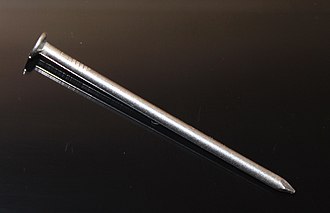Discover Your Roots
SIGN UPDiscover Your Roots
SIGN UPNail is a male name of Arabic origin, meaning "Attainer" or "Successful." In Turkish culture, it is associated with individuals who achieve their goals and triumph over challenges. Notable individuals bearing this name include Nail Bakirov, a renowned Russian statistician, Nail Çakırhan, a celebrated Turkish poet and architect, and Nail Yakupov, a prominent Russian National Hockey League player. The name has also made appearances in popular culture, with a minor protagonist named Nail in Dragon Ball Z. Additionally, there are various individuals with similar names, such as Naili. This name holds a strong and positive connotation, symbolizing accomplishment and victory, making it a fitting choice for those seeking a name with a powerful and meaningful significance.

The history of nails can be divided into three distinct periods: hand-wrought (forged) nails, cut nails, and wire nails. Hand-wrought nails were made by a smith, who worked an iron pin tapering to a point, then inserted it into a nail-header and hammered the broad end to create a nail-head. The Romans extensively used nails, and the term "penny" in medieval England referred to the price of a hundred nails. Until around 1800, artisans known as nailers or nailors made nails by hand. The growth of the nail trade in the American colonies was theoretically held back by the prohibition of new slitting mills by the Iron Act. The slitting mill, introduced to England in 1590, simplified the production of nail rods, leading to the mechanization of the nail-making process between 1790 and 1820. These nails, known as cut nails, were produced by cutting iron bars into rods and were patented in the U.S. by Jacob Perkins in 1795 and in England by Joseph Dyer. Nails have a rich history and have evolved significantly over time, representing an important aspect of human craftsmanship and ingenuity.




All images displayed on this page are sourced from Wikipedia or Wikimedia Commons.We use these images under their respective Creative Commons or public domain licenses. Wherever applicable, author attributions and license information are provided. If you believe an image is used incorrectly or outside its license terms, please contact us so that we can review and correct the issue.